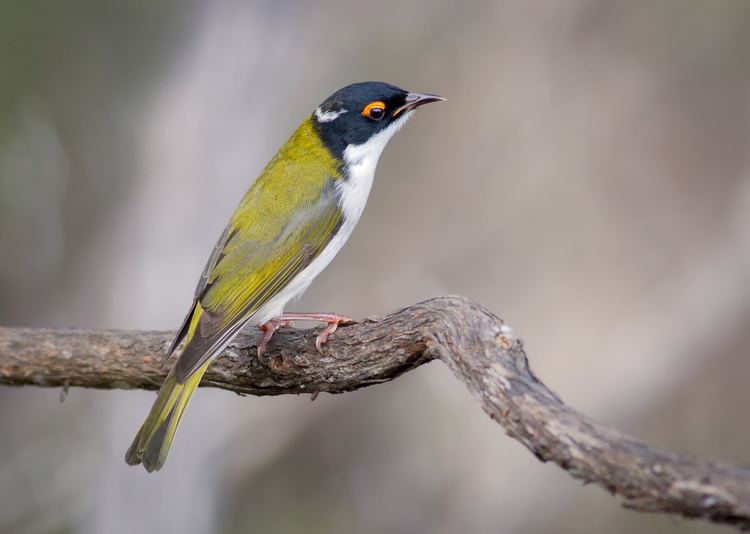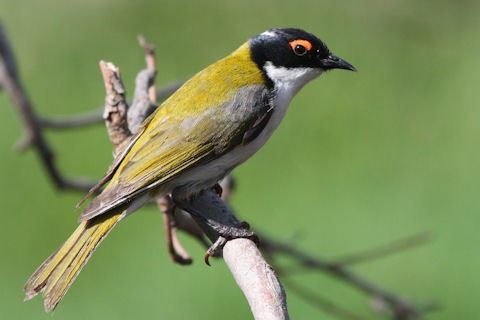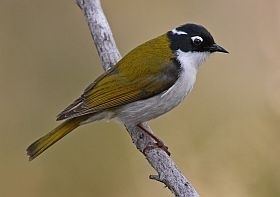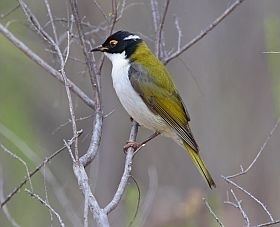Order Passeriformes | Phylum Chordata Family Meliphagidae Scientific name Melithreptus lunatus Rank Species | |
 | ||
Similar Honeyeater, Melithreptus, Bird, Brown‑headed honeyeater, Yellow‑faced honeyeater | ||
White naped honeyeater bird watching in australia with ej birdwatching
The white-naped honeyeater (Melithreptus lunatus) is a passerine bird of the honeyeater family Meliphagidae native to eastern Australia. Birds from southwestern Australia have been shown to be a distinct species, Gilbert's honeyeater, and the eastern birds more closely related to the black-headed honeyeater of Tasmania. One of several similar species of black-headed honeyeaters in the genus Melithreptus, it dwells in dry sclerophyll eucalypt woodland. Its diet consists of nectar from various flowers and insects.
Contents
- White naped honeyeater bird watching in australia with ej birdwatching
- White naped honeyeater
- Taxonomy
- Description
- Ecology
- Reproduction
- References

White naped honeyeater
Taxonomy

The white-naped honeyeater was originally described as Certhia lunata by French ornithologist Louis Jean Pierre Vieillot in 1802. The specific name is derived from the Latin luna, meaning "moon"; this refers to its crescent-shaped white marking on its nape. It is a member of the genus Melithreptus with several species, of similar size and (apart from the brown-headed honeyeater) black-headed appearance, in the honeyeater family Meliphagidae. The next closest relative outside the genus is the much larger but similarly marked blue-faced honeyeater. More recently, DNA analysis has shown honeyeaters to be related to the Pardalotidae (pardalotes), Acanthizidae (Australian warblers, scrubwrens, thornbills, etc.), and the Maluridae (Australian fairy-wrens) in a large Meliphagoidea superfamily.

Gilbert's honeyeater, found in southwest Western Australia, was initially described as a separate species by John Gould in 1844, before being reclassified as a subspecies of the white-naped for many years. However, a molecular study published in 2010 showed that it had diverged before the split of populations in eastern Australia into the white-naped and black-headed honeyeaters.
Description

A mid-sized honeyeater at 13–15 cm (5–6 in) in length, it is olive green above and white below, with a black head, nape and throat and a red patch over the eye and a white crescent-shaped patch on the nape, thinner than other species. Juveniles have brownish crowns and an orange base of bill. Its call is a mjerp mjerp.
Ecology

It is found in forest. Its diet is principally nectar from a variety of flowers supplemented by insects and various other invertebrates.
Reproduction

White-naped honeyeaters may nest from July to December, breeding once or twice during this time. The nest is a thick-walled bowl of grasses and bits of bark in the fork of a tall tree, usually a eucalypt. Two or three eggs are laid, 18 x 14 mm and shiny buff-pink sparsely spotted with red-brown.
